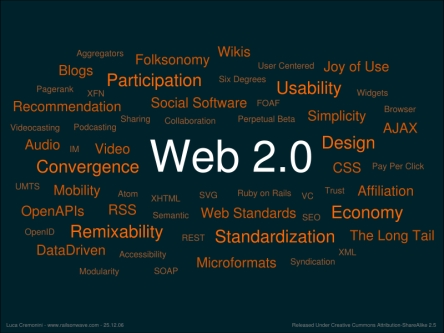Web 2.0

Reasonable people disagree about what Web 2.0 means. Let’s clear that up. Web 2.0 refers to the propensity of recent Internet applications to be more collaborative and provide for a richer user experience. Web 1.0 was a Web site that looked like a brochure or a resume. Web 2.0 is a blog. Web 1.0 was your newspaper’s classified ads, webified. Web 2.0 is eBay or craigslist. Web 1.0 was Netscape (i.e., here’s some software). Web 2.0 is Google (there’s nothing to install, but it’s powerful).
Web 2.0 is about harnessing collective intelligence and eliminating the software release cycle. It’s about providing services, not products. Much of the agile software development mindset is rolled up into the phrase. It’s about trusting users as co-developers of content or even of technology.
Web 2.0 includes a social dimension, greater openness and transparency in process. It includes the use of new technologies, such as Really Simple Syndication (RSS,), Web Service Definition Language (WSDL) and eXtensible Markup Language (XML). It has a more open style and a "keep it simple" approach. Many of these attributes go hand in hand. For example, open source technologies tend to be simple, transparent and lightweight. It’s more of an attitude than a specific architectural protocol.





 Entries (RSS)
Entries (RSS)